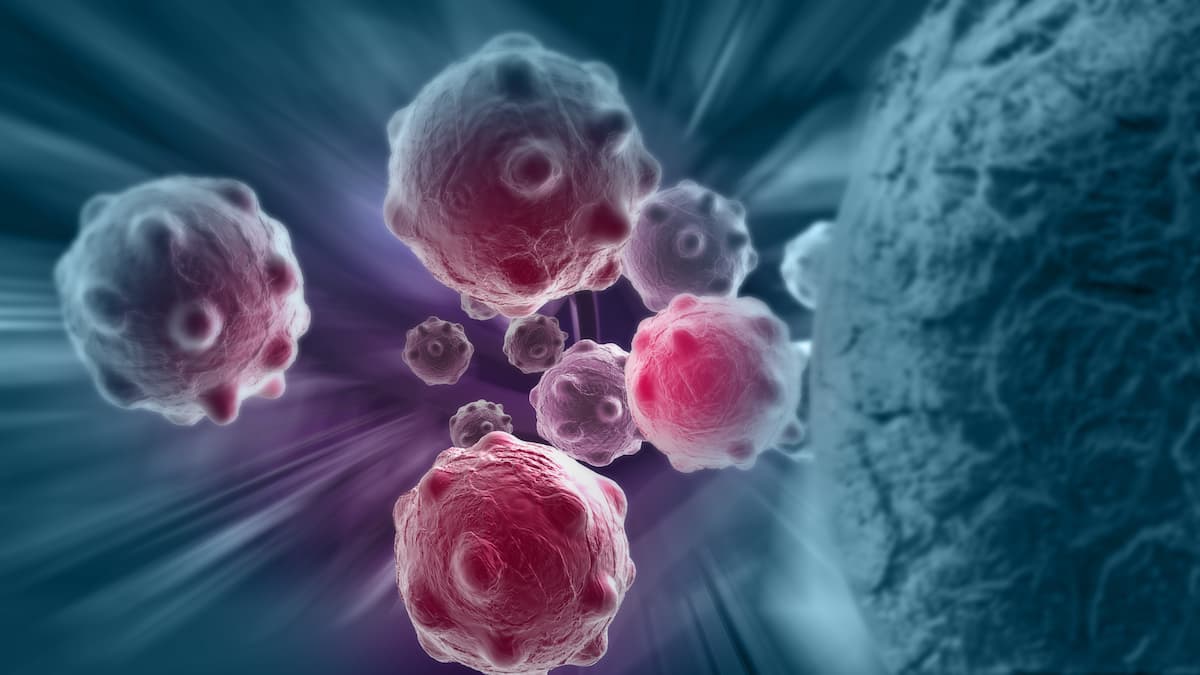Post-HCT Cyclophosphamide Yields Similar Outcomes in GVHD Subgroups
Cyclophosphamide-based prophylaxis for GVHD showed similar outcomes across racial subgroups regardless of matched or mismatched unrelated donors.
"These results suggest that [posttransplant cyclophosphamide] is an acceptable alternative to CNI-based prophylaxis in [matched unrelated donor] HCT recipients and superior to CNI-based prophylaxis that do not incorporate abatacept in [mismatched unrelated donor] HCT, extending recent findings of a randomized clinical trial similarly demonstrating improvement in GRFS with [cyclophosphamide]-based GVHD prophylaxis in the reduced-intensity conditioning setting," according to the study authors.

Posttransplant treatment with cyclophosphamide showed comparable overall survival (OS) and graft-versus-host disease (GVHD)–free relapse-free survival (GRFS) outcomes vs calcineurin inhibitor (CNI)–based prophylaxis in either matched or mismatched unrelated donors across racial and ethnic populations with hematologic cancers, according to retrospective results published in the Journal of Clinical Oncology.1
Results showed that OS was similar in patients with cyclophosphamide-based prophylaxis following hematopoietic cell transplant (HCT) who had matched or mismatched unrelated donors (HR, 0.96; 95% CI, 0.82-1.18; P = .60). GRFS outcomes were also similar with posttransplant cyclophosphamide regardless of matched or mismatched unrelated donor HCT (HR, 0.90; 95% CI, 0.79-1.02; P = .11). When matched unrelated donor recipients were compared with CNI or cyclophosphamide-based prophylaxis, OS was improved with the latter (HR, 0.88; 95% CI, 0.804-0.96; P = .0041), as well as GRFS (HR, 0.61; 95% CI, 0.57-0.66; P < .0001). The GRFS benefit was also seen with cyclophosphamide among mismatched unrelated donors (HR, 0.68; 95% CI, 0.60-0.76; P <.0001).
Of note, the OS and GRFS improvements with cyclophosphamide were found to be independent of patient ancestry, and that “global registry level analysis demonstrated that inclusion of [mismatched unrelated donors] increased donor availability regardless of recipient ancestry,” lead study author Brian C. Shaffer, MD, MS, of the Adult Bone Marrow Transplantation Service, Department of Medicine, of Memorial Sloan Kettering Cancer Center, and coinvestigators wrote in the publication.1
“These results suggest that [posttransplant cyclophosphamide] is an acceptable alternative to CNI-based prophylaxis in [matched unrelated donor] HCT recipients and superior to CNI-based prophylaxis that do not incorporate abatacept [Orencia] in [mismatched unrelated donor] HCT, extending recent findings of a randomized clinical trial2 similarly demonstrating improvement in GRFS with [cyclophosphamide]-based GVHD prophylaxis in the reduced-intensity conditioning setting,” the authors continued.1
Allogeneic HCT access is limited for patients with non-European ancestry, specifically if human leukocyte antigen (HLA) matching is required. In the trial, investigators evaluated whether posttransplant cyclophosphamide prophylaxis for GVHD improved transplant outcomes compared with CNI–based prophylaxis, as well as whether survival outcomes differed dependent on matched or mismatched unrelated donor HCT when posttransplant cyclophosphamide was used.
For the analysis, investigators compared 3-year OS and GRFS outcomes in adult patients undergoing HCT with initial matched unrelated donors or single HLA locus mismatch unrelated donors, with either cyclophosphamide- or CNI-based prophylaxis. All cases must have been reported to the Center for International Blood and Marrow Transplant Research between 2017 and 2021.
Of the 10,025 HCT recipients included in the analysis, the breakdown comprised those with matched unrelated donors with CNI-based prophylaxis (n = 7272), matched unrelated donors with cyclophosphamide-based prophylaxis (n = 1681), mismatched unrelated donors with CNI-based prophylaxis (n = 613), and mismatched unrelated donors with cyclophosphamide-based prophylaxis (n = 459).
The median age was 60.7 years (range, 18.0-82.7). Patients underwent transplant for acute leukemia (70.9%) or myelodysplastic syndromes (29.2%). The median time from diagnosis to transplant was 6.0 months (IQR, 4.4-9.9), with mismatched unrelated donor HCT recipients having a longer time from diagnosis to transplant of 6.7 months (IQR, 4.7-11.3) vs 6.0 months (IQR, 4.4-9.8; P <.001) for matched unrelated donor HCT recipients. Twenty-two percent of mismatched unrelated donor recipients were of minority ancestry vs 8% of matched unrelated donor recipients (P <.0001), and myeloablative conditioning was used in 47% of those who received CNI-based prophylaxis vs 40% who had cyclophosphamide-based prophylaxis (P <.001).
In total, patients were White (90.1%), Black/African American (2.8%), Asian (2.9%), other races (0.9%), or not reported (3.4%). Additionally, patients were Hispanic/Latino (7.3%), non-Hispanic/non-Latino (89.6%), or not reported (3.1%).
Antithymocyte globulin administration was given in mismatched unrelated donor recipients with CNI-based prophylaxis (48.1%), matched unrelated donor recipients with CNI-based prophylaxis (31.0%), mismatched unrelated donor recipients with cyclophosphamide-based prophylaxis (2.5%), and matched unrelated donor recipients with cyclophosphamide-based prophylaxis (<1%; global P <.001).
The median follow-up was 36.6 months (range, 3.0-77.8). Additional OS data showed that between matched and mismatched unrelated donor recipients who received CNI-based prophylaxis, the HR for matched unrelated donor recipients was 0.80 (95% CI, 0.70-0.92; P = .016). Furthermore, mismatched unrelated donor recipients with cyclophosphamide-based prophylaxis had similar OS outcomes compared with matched unrelated donor recipients who had CNI-based prophylaxis (HR, 0.92; 95% CI, 0.80-1.05; P = .2062).
References
- Shaffer BC, Gooptu M, DeFor TE, et al. Post-transplant cyclophosphamide–based graft-versus-host disease prophylaxis attenuates disparity in outcomes between use of matched or mismatched unrelated donors. J Clin Oncol. Published online ahead of print July 17, 2024. doi:10.1200/JCO.24.00184
- Bolaños-Meade J, Hamadani M, Wu J, et al. Post-transplantation cyclophosphamide-based graft-versus-host disease prophylaxis. N Engl J Med. 2023;388(25):2338-2348. doi: 10.1056/NEJMoa2215943.
Navigating AE Management for Cellular Therapy Across Hematologic Cancers
A panel of clinical pharmacists discussed strategies for mitigating toxicities across different multiple myeloma, lymphoma, and leukemia populations.